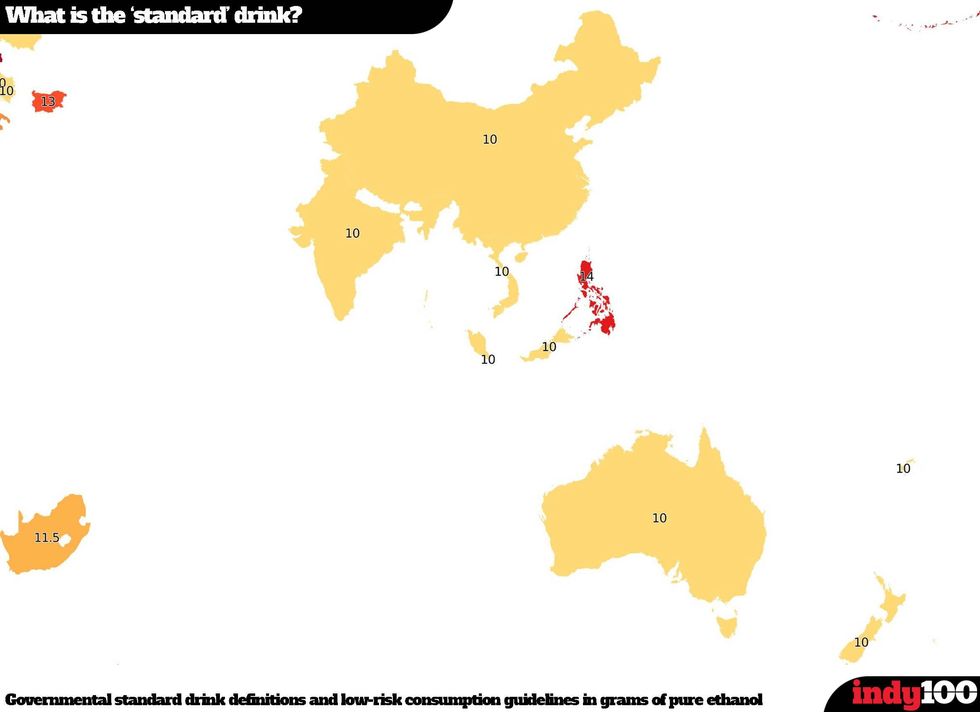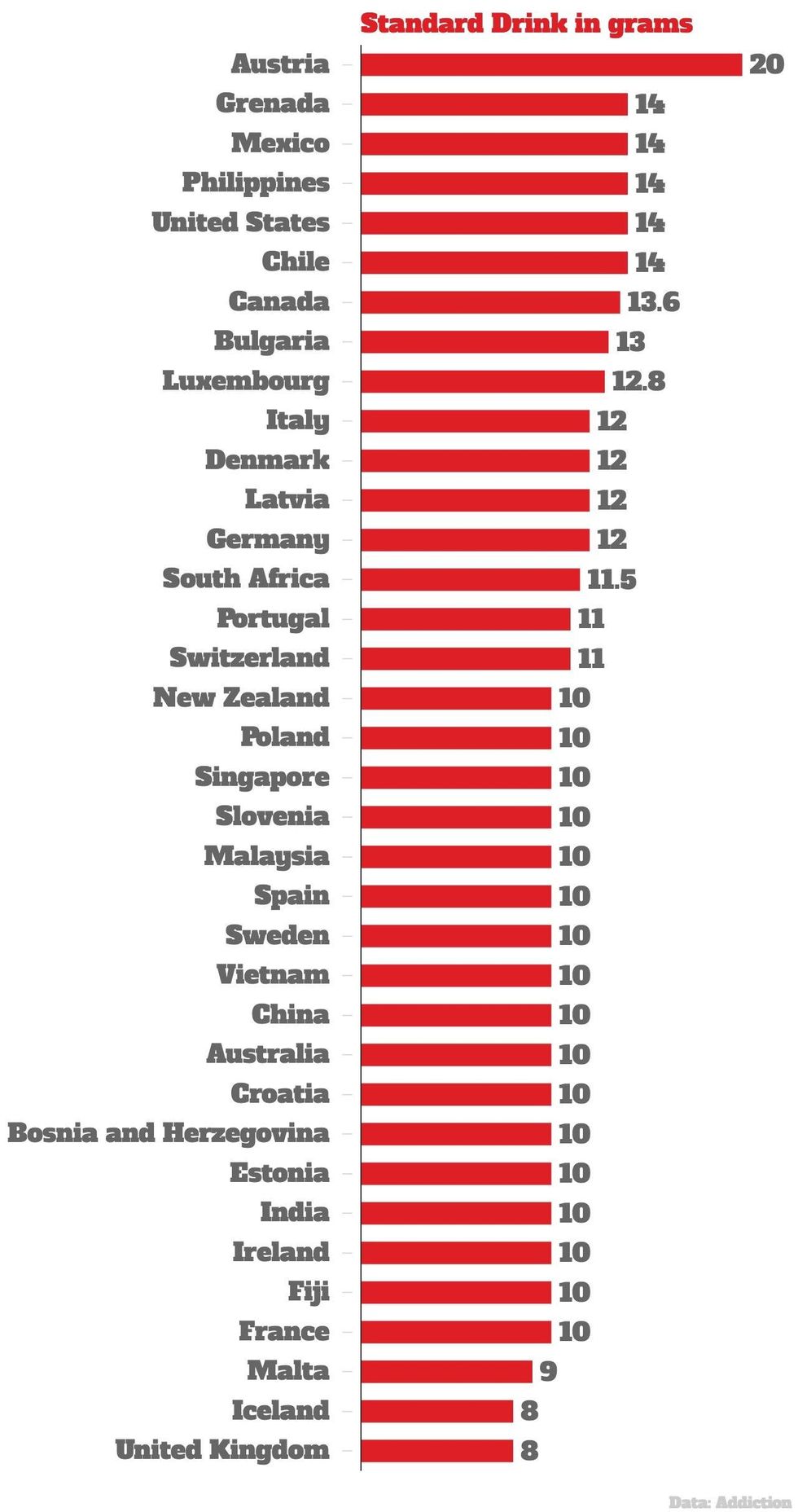News
Louis Dor
Apr 13, 2016

Picture: Peter Macdiarmid/Getty Images
Given that alcoholic drinks vary in strength, origin, flavour, consistency, clarity, the glass it comes in, and almost every other variable imaginable, what would you say is the standard strength of an alcoholic drink?
Scientists have sought to do exactly that on an international scale, surveying 75 countries for definitions, of which 36 were identified as having adopted a standard drink definition.
The study, published in the journal Addiction surveyed the alcohol content of a selection of the 36 countries around the world which had a definition, finding that the strength of "one drink" varies very much depending on where you order it.
For example, the average drink of Iceland, based on governmental definitions and consumption guidelines, contains roughly eight grams of ethanol, a far cry from the 20 grams contained in the average Austrian drink.
Not pictured in these maps were Chile or Grenada, for which the amounts were 14g, as you can see in the interactive version on CartoDB.
The study concluded that:
Researchers working and communicating across national boundaries should be sensitive to the substantial variability in ‘standard’ drink definitions and low-risk drinking guidelines.
However, it's worth noting that bartenders around the world are likely to vary a little in terms of how much of what they pour - it's rarely likely to be the World Health Organisation's dictated definition of 10 grams of pure ethanol per beverage.
Unless your local pub is a stickler for precision, that is.
More:These are the countries around the world that drink the most alcohol
More:Nigel Farage is angry about the new alcohol guidelines and has called for a 'mass protest'
More:The good and bad of your brain on alcohol, as explained by an expert
The Conversation (0)















